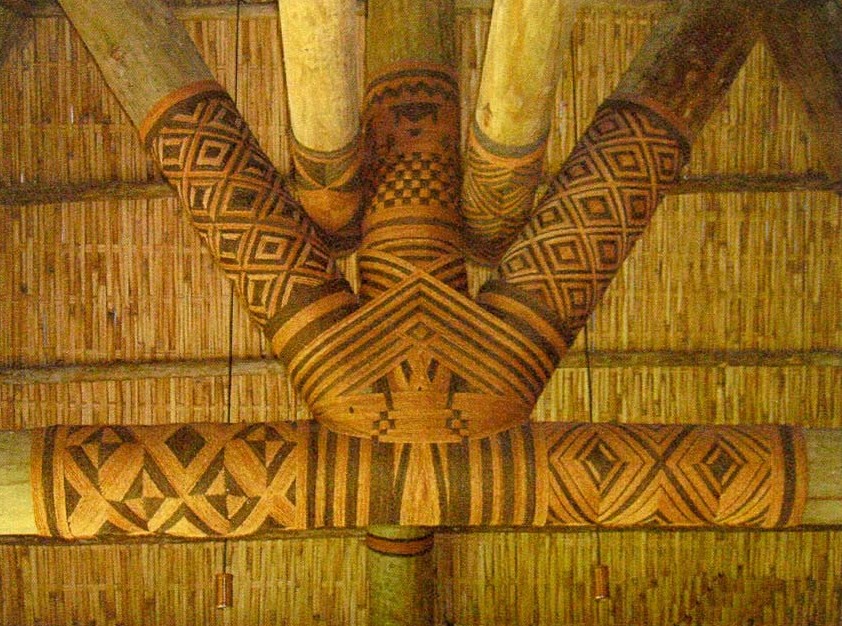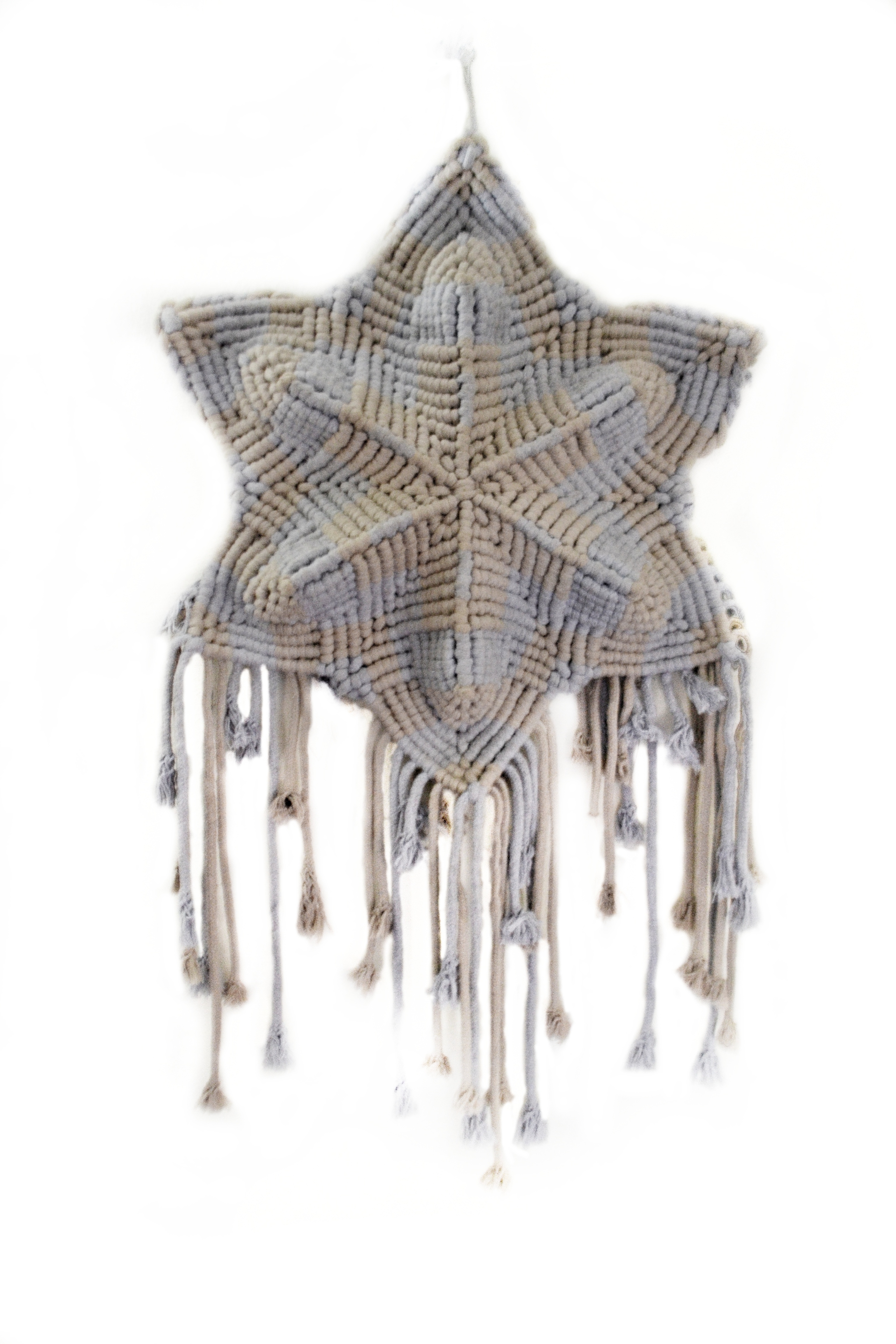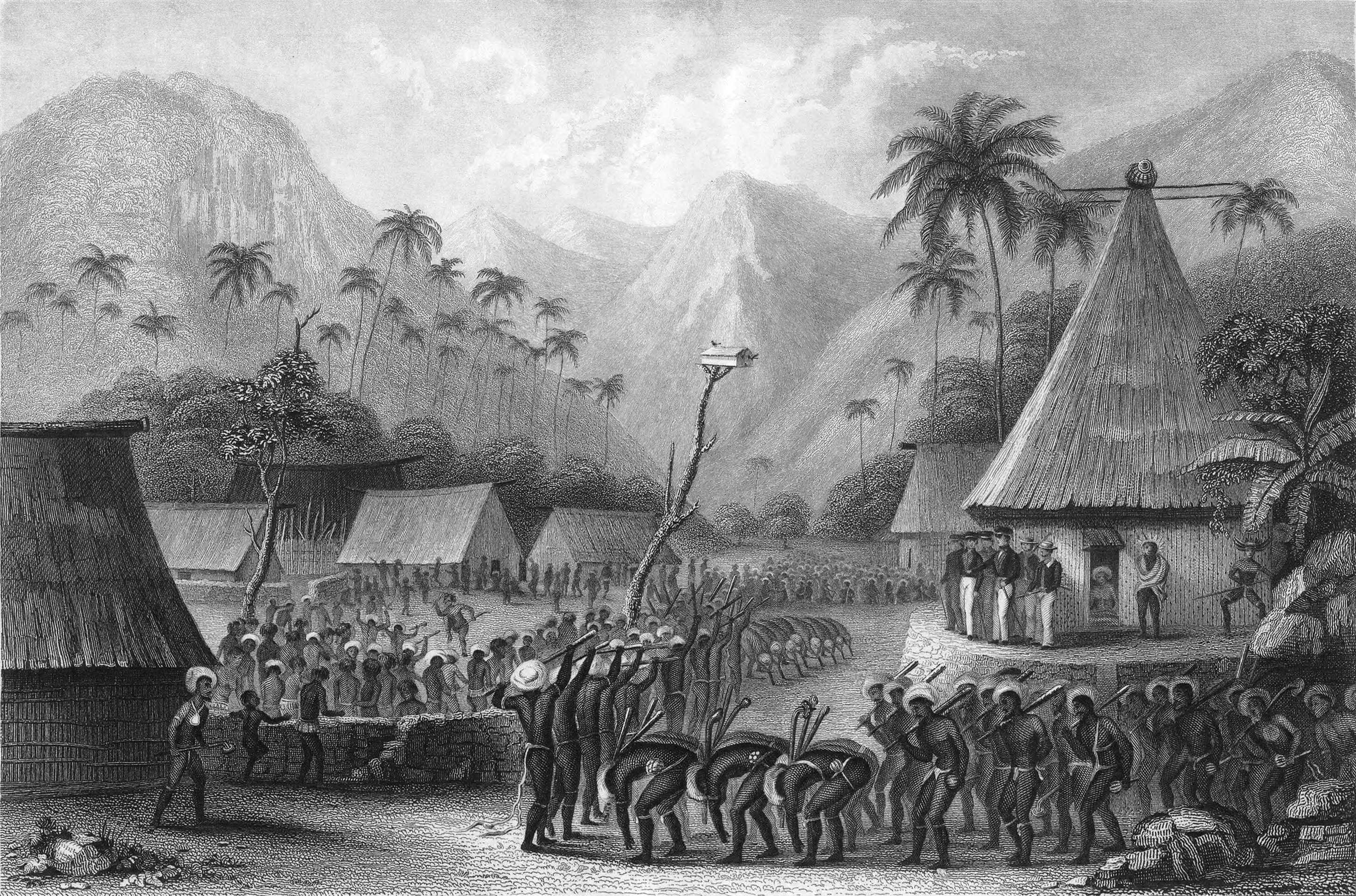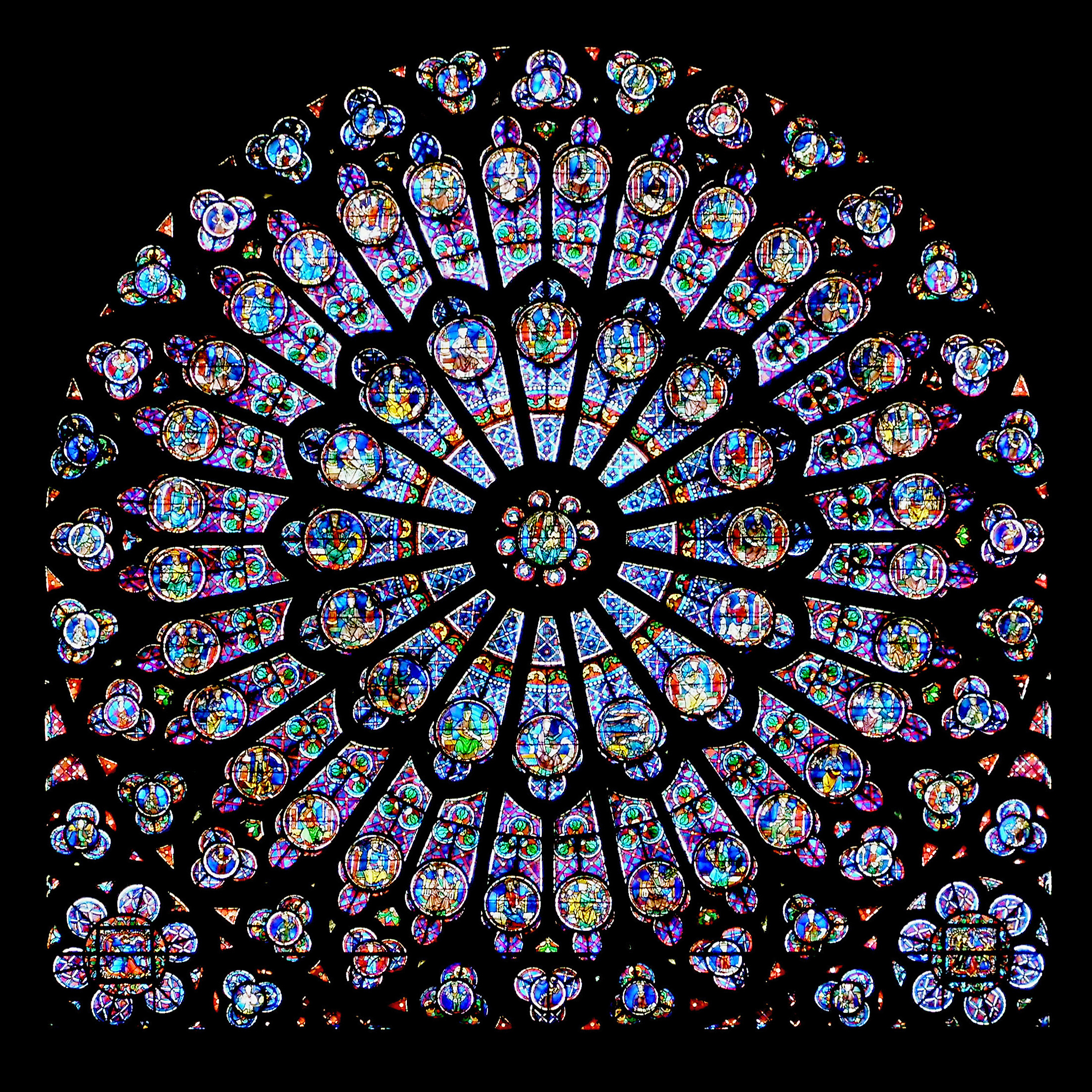|
Sennit
Sennit is a type of cordage made by plaiting strands of dried fibre or grass. It can be used ornamentally in crafts, like a kind of ''macramé'', or to make straw hats. Sennit is an important material in the cultures of Oceania, where it is used in traditional architecture, boat building, fishing and as an ornamentation. Oceania Tonga Sennit in Tonga is called ''kafa.'' Fiji The Fijian term used is '' magimagi'', a craft product of the Fiji Islands. Hawai'i The term is also used in Hawaii and throughout Polynesia for cordage made by braiding the fibers of coconut husks. It was important in attaching the '' ama'' (outrigger float) via the '' iako'' (spars) to the hull of canoes, stones to war-club handles, erecting ''hale'' (houses), etc. Samoa In the Samoan language, sennit is called ''afa''. It was used as cordage in the construction of traditional Samoan architecture, boat building with many other functional uses. ''Afa'' is handmade from dried coconut fibre from t ... [...More Info...] [...Related Items...] OR: [Wikipedia] [Google] [Baidu] |
Braid
A braid (also referred to as a plait) is a complex structure or pattern formed by interlacing two or more strands of flexible material such as textile yarns, wire, or hair. The simplest and most common version is a flat, solid, three-stranded structure. More complex patterns can be constructed from an arbitrary number of strands to create a wider range of structures (such as a fishtail braid, a five-stranded braid, rope braid, a French braid and a waterfall braid). The structure is usually long and narrow with each component strand functionally equivalent in zigzagging forward through the overlapping mass of the others. It can be compared with the process of weaving, which usually involves two separate perpendicular groups of strands ( warp and weft). Historically, the materials used have depended on the indigenous plants and animals available in the local area. During the Industrial Revolution, mechanized braiding equipment was invented to increase production. The braiding t ... [...More Info...] [...Related Items...] OR: [Wikipedia] [Google] [Baidu] |
Macramé
Macramé is a form of textile produced using knotting (rather than weaving or knitting) techniques. The primary knots of macramé are the square (or reef knot) and forms of "hitching": various combinations of half hitches. It was long crafted by sailors, especially in elaborate or ornamental knotting forms, to cover anything from knife handles to bottles to parts of ships. Cavandoli macramé is one variety that is used to form geometric and free-form patterns like weaving. The Cavandoli style is done mainly in a single knot, the double half-hitch knot. Reverse half hitches are sometimes used to maintain balance when working left and right halves of a balanced piece. Leather or fabric belts are another accessory often created via macramé techniques. Most friendship bracelets exchanged among schoolchildren and teens are created using this method. Vendors at theme parks, malls, seasonal fairs and other public places may sell macramé jewelry or decoration as well. History One ... [...More Info...] [...Related Items...] OR: [Wikipedia] [Google] [Baidu] |
Chain Sinnet
A chain sinnet (or chain sennit) is a method of shortening a rope or other cable while in use or for storage. It is formed by making a series of simple crochet-like stitches in the line.Clifford W. Ashley, ''The Ashley Book of Knots'' (New York: Doubleday, 1944), 209. It can also reduce tangling while a rope is being washed in a washing machine. Tying To tie: #Create a loop in the rope. Then pull a bight of the working part through the loop, creating an overhand noose knot. #Pull another bight of the working part through the loop of the previous stitch. #Tighten the stitch to the desired degree by pulling on both sides of the loop. Adjust the loop by pulling on the working end to keep it a reasonable size. #Repeat steps 2–3 until the rope has been sufficiently shortened. #To lock the sinnet, pass the working end through the final loop. To restore the rope to its original length, pull the end passed in the last step back through the final loop and pull on the free end. Th ... [...More Info...] [...Related Items...] OR: [Wikipedia] [Google] [Baidu] |
Magimagi - Mainbeam
Magimagi is a fibrous product made from coconut husk. The process of weaving the husk into the traditional look is very labor-intensive. The earliest record of the unique Magimagi design is listed in the ''Narrative of the United States Exploring Expedition'' by Wilkes (Wilkes, 1845). Concerning the huts named bures that were on the island Wilkes says, “The walls and roof of the mbure ureare constructed of canes about the size of a finger, and each one is wound round with sennit agimagias thick as cod-line, made from the cocoa-nut husk” (p. 119). The forefathers of the current inhabitants of the Vulaga islands used Magimagi in the construction of their houses and canoes. The unique weaved design is accomplished by Vulaga teams that are able to design many graphics into the look. Magimagi coconut trees take about five years to bear fruit. The husks from the nuts are braided and woven into a strong, thin rope "as thick as a cod line". The Magimagi coconut only grows in ... [...More Info...] [...Related Items...] OR: [Wikipedia] [Google] [Baidu] |
Outrigger Canoe
Outrigger boats are various watercraft featuring one or more lateral support floats known as outriggers, which are fastened to one or both sides of the main hull. They can range from small dugout canoes to large plank-built vessels. Outrigger boats can also vary in their configuration, from the ancestral double-hull configuration (catamarans), to single-outrigger vessels prevalent in the Pacific Islands and Madagascar, to the double-outrigger vessels (trimarans) prevalent in Island Southeast Asia. They are traditionally fitted with Austronesian sails, like the crab claw sails and tanja sails, but in modern times are often fitted with petrol engines. Unlike a single-hulled vessel, an outrigger or double-hull vessel generates stability as a result of the distance between its hulls rather than due to the shape of each individual hull. As such, the hulls of outrigger or double-hull boats are typically longer, narrower and more hydrodynamically efficient than those of single-hul ... [...More Info...] [...Related Items...] OR: [Wikipedia] [Google] [Baidu] |
Polynesian Culture
Polynesian culture is the culture of the indigenous peoples of Polynesia who share common traits in language, customs and society. The development of Polynesian culture is typically divided into four different historical eras: *Exploration and settlement (c. 1800 BC – c. AD 700) *Development in isolation (c. 700 – 1595) *European encounter and colonization until World War II (1595–1946) *Post-World War II Period History Origins, exploration and settlement (c. 1800 BC – c. 700 AD) Maternal mitochondrial DNA analysis suggests that Polynesians, including Samoans, Tongans, Niueans, Cook Islanders, Tahitians, Hawaiians, Marquesans and Māori, are genetically linked to indigenous peoples of parts of Maritime Southeast Asia including those of Taiwanese aborigines. This DNA evidence is supported by linguistic and archeological evidence. Recent studies into paternal Y chromosome analysis shows that Polynesians are also genetically linked to peoples of Melanesia. Between abou ... [...More Info...] [...Related Items...] OR: [Wikipedia] [Google] [Baidu] |
Hawaii Culture
Hawaii ( ; haw, Hawaii or ) is a U.S. state, state in the Western United States, Western United States, located in the Pacific Ocean about from the U.S. mainland. It is the only U.S. state outside North America, the only state that is an archipelago, and the only state geographically located within the tropics. Hawaii comprises Midway Atoll, nearly the entire Hawaiian Islands, Hawaiian archipelago, 137 High island, volcanic islands spanning that are physiography, physiographically and Ethnography, ethnologically part of the Polynesian subregion of Oceania. The state's ocean coastline is consequently the list of U.S. states and territories by coastline, fourth-longest in the U.S., at about . The eight main islands, from northwest to southeast, are Niihau, Niihau, Kauai, Kauai, Oahu, Oahu, Molokai, Molokai, Lanai, Lānai, Kahoolawe, Kahoolawe, Maui, and Hawaii (island), Hawaii—the last of these, after which the state is named, is often called the "Big Island" or "Hawa ... [...More Info...] [...Related Items...] OR: [Wikipedia] [Google] [Baidu] |
Fijian Culture
The culture of Fiji is a tapestry of native Fijian, Indian, European, Chinese, and other nationalities. Culture polity traditions, language, food costume, belief system, architecture, arts, craft, music, dance, and sports will be discussed in this article to give you an indication of Fiji's indigenous community but also the various communities which make up Fiji as a modern culture and living. The indigenous culture is an active and living part of everyday life for the majority of the population. Fijian culture has evolved with the introduction of Indian, Chinese and European culture, and various cultures from the Pacific neighbors of Fiji; in particular the Tongan and Rotuman cultures. The culture of Fiji, including language, has created a unique communal and national identity. History Tradition and hierarchy Fijian indigenous society is very communal, with great importance attached to the family unit, the village, and the ''vanua'' (land).Spoken Fijian: Albert James Schüt ... [...More Info...] [...Related Items...] OR: [Wikipedia] [Google] [Baidu] |
Decorative Knots
Beauty is commonly described as a feature of objects that makes these objects pleasurable to perceive. Such objects include landscapes, sunsets, humans and works of art. Beauty, together with art and taste, is the main subject of aesthetics, one of the major branches of philosophy. As a positive aesthetic value, it is contrasted with ugliness as its negative counterpart. Along with truth and goodness it is one of the transcendentals, which are often considered the three fundamental concepts of human understanding. One difficulty in understanding beauty is because it has both objective and subjective aspects: it is seen as a property of things but also as depending on the emotional response of observers. Because of its subjective side, beauty is said to be "in the eye of the beholder". It has been argued that the ability on the side of the subject needed to perceive and judge beauty, sometimes referred to as the "sense of taste", can be trained and that the verdicts of experts ... [...More Info...] [...Related Items...] OR: [Wikipedia] [Google] [Baidu] |
Boatmen Hat
__NOTOC__ A boater (also straw boater, basher, skimmer, The English Panama, cady, katie, canotier, somer, sennit hat, or in Japan, can-can hat, suruken) is a semi-formal summer hat for men, which was popularised in the late 19th century and early 20th century. It is normally made of stiff sennit straw and has a stiff flat crown and brim, typically with a solid or striped grosgrain ribbon around the crown. Boaters were derived from the canotier straw hat worn traditionally by gondoliers in the city of Venice. The Venetian canotier has a ribbon that hangs freely off the back, and they are frequently edged with a matching color ribbon. Because of this, boaters were identified with boating or sailing, hence the name. Boaters were also identified more with sporting events and universities as well. They were also worn by women, often with hatpins to keep them in place. Nowadays they are rarely seen except at sailing or rowing events, period-related theatrical and musical performanc ... [...More Info...] [...Related Items...] OR: [Wikipedia] [Google] [Baidu] |
Noose
A noose is a loop at the end of a rope in which the knot tightens under load and can be loosened without untying the knot. The knot can be used to secure a rope to a post, pole, or animal but only where the end is in a position that the loop can be passed over. Tying The knot is tied by forming a turn in the end of a rope, and then passing a bight in the standing part through. The noose knot is a slipped version of the overhand knot. Use in hanging The knot most closely associated with execution is the hangman's knot, which is also known as the "hangman's noose". Tying is similar to the original noose, but many turns are wrapped around the loop. The reason for this was to make the hanging more humane, as it would break the person's neck, killing the person instantly, rather than strangling them to death. A similar method is also commonly used for suicide. Search engines such as Google provide the number of a suicide helpline if a search for "how to tie a noose" is made ... [...More Info...] [...Related Items...] OR: [Wikipedia] [Google] [Baidu] |
Robert Gibbings
Robert John Gibbings (23 March 1889 – 19 January 1958) was an Irish artist and author who was most noted for his work as a wood engraver and sculptor, and for his books on travel and natural history.Martin J. Andrews, ''The Life and Work of Robert Gibbings'' (Bicester, Primrose Hill Press, 2003), . Along with Noel Rooke he was one of the founder members of the Society of Wood Engravers in 1920, and was a major influence in the revival of wood engraving in the twentieth century. His early life Gibbings was born in Cork into a middle-class family. His father, the Reverend Edward Gibbings, was a Church of Ireland minister. His mother, Caroline, was the daughter of Robert Day, Fellow of the Royal Society of Antiquaries of Ireland and president of The Cork Historical and Archaeological Society. He grew up in the town of Kinsale where his father was the rector of St. Multose Church. He studied medicine for three years at University College Cork before deciding to persuade his ... [...More Info...] [...Related Items...] OR: [Wikipedia] [Google] [Baidu] |







